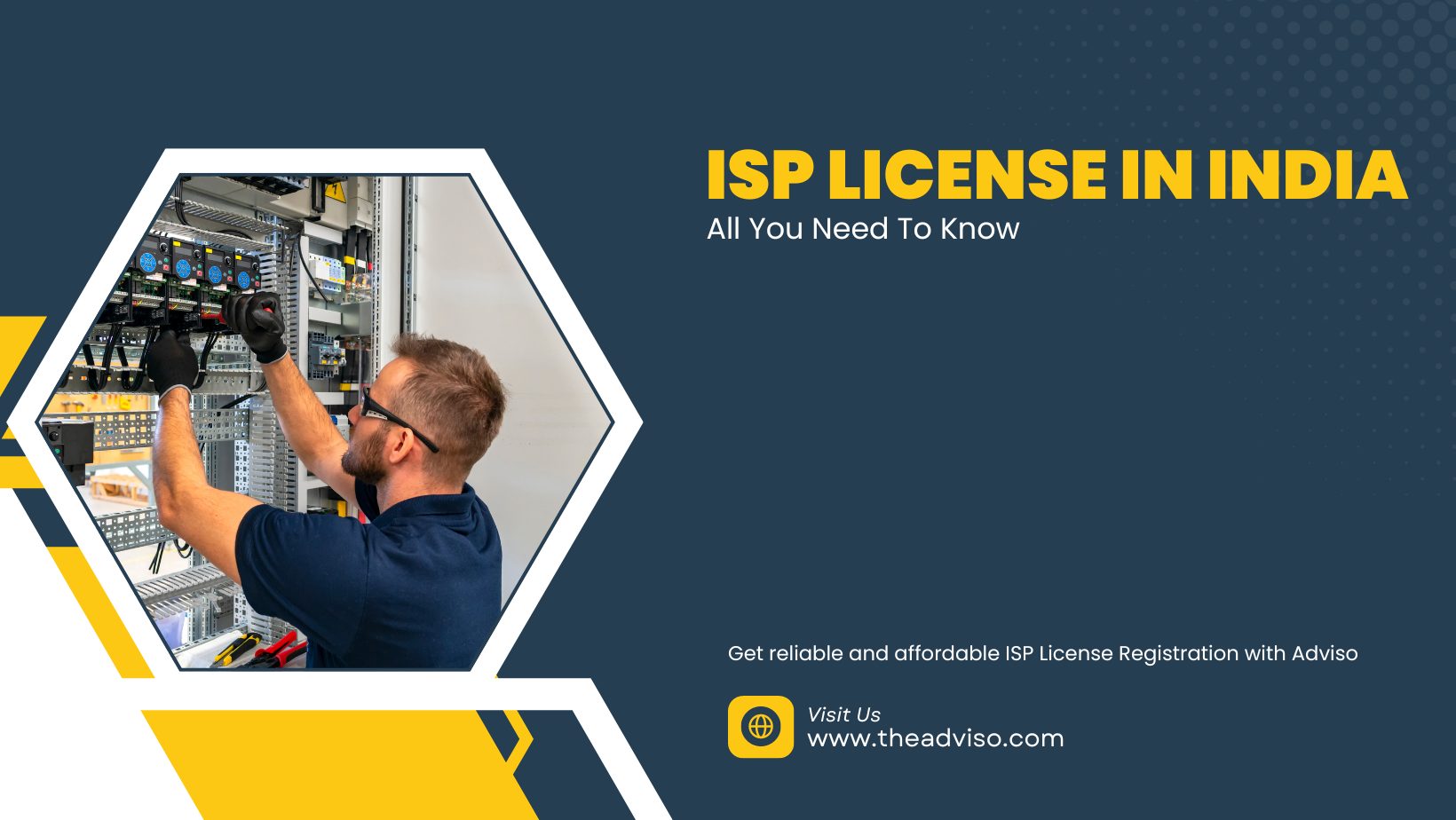ISP license
ISP stands for Internet Service Provider. Depending on the area to be served, an ISP buys the required bandwidth from the telecom organization and uses it to render internet services. However, ISPs cannot commence their operation until they secure the unified ISP license from the governing authority, i.e. The Department of Telecommunication (DoT).
What is an ISP license?
ISP license is a mandatory legal approval for those intending to start internet services across a specified/notified region. The Department of Telecommunication (DoT) grants this certification against the prescribed application and standard fee.
Adherence to ISP registration norms is vital for license holders. Any negligence in this context can lead to license rejection. The license cost varies as per the chosen category of the license.
The DoT underpins the registration and operational norms for ISPs in India. The Indian Telegraph Act, of 1885, and the Indian Telegraph Rules, of 1951 vest DoT with the power to regulate and legitimize ISPs comprehensively.
Categories of ISP License
The ISP license is bifurcated into three categories.
ISP license category A: Class A enables ISPs to render nationwide internet services. The basic setup and license fee for securing a Class A license can be overwhelming for budget-conscious applicants.
ISP registration category B: This category of license enables service providers to cater to as many as 20 territorial regions.
ISP license category C: Class C ISP license allows ISP to render internet service across DoT’s secondary switching area, which comprises small towns, villages, or even districts.
Paperwork to apply for an ISP license
To apply for an Internet Service Provider (ISP) license in India, you will need to arrange the following paperwork:
Company Incorporation Documents:
Copies of the COI, Memorandum, and Articles of Association (MAA), and Board Resolution authorizing the application relating to ISP license.
Shareholding Pattern:
Information about the company’s shareholding pattern, including shareholders’ names and shareholding threshold (percentage).
Director Details:
Detail of directors, such as their names, addresses, identification proof, and proof of residence.
Infrastructure Details:
In-depth detail concerning the infrastructure, including network topology, equipment specs, and technical capabilities.
Financial Documents:
Financial statements, such as balance sheets, profit and loss statements, and audited accounts. This helps the authority to have a better idea of the company’s financial stability and viability.
Technical Feasibility Report:
An in-depth technical feasibility report showing the proposed network architecture, bandwidth capacity, and scalability plans.
Security Compliance Plan:
Plan showing steps to be taken for deploying network security, and data protection, and ensuring compliance with relevant cybersecurity standards and regulations.
Service Level Agreement (SLA):
Draft of the proposed Service Level Agreement outlining the terms and conditions of service provision to customers.
Infrastructure Ownership Proof:
Paperwork reinforcing legal ownership of the business place and place that is proposed to hold the operational resources.
Network Diagram:
Detailed network diagram showing layout concerning network infrastructure, including points of establishment, interconnection points, as well as distribution nodes.
Legal Undertakings:
Undertakings or declarations showing adherence to underlying laws, regulations, and licensing conditions.
Steps to secure an ISP license in India
The process of securing an ISP registration entails the following steps:
Step 1: Preparation of Application:
The first step involves filling out the prescribed application with information about the company, its infrastructure plan, its management, and financial projections.
Step 2: Submission of Application:
The completed application form must be attached with mandatory paperwork. Once done, submit the same to DoT with the applicable inspection fee.
Step 3: Scrutiny and Verification:
The DoT drills down the submitted paperwork to ensure compliance with regulatory norms. The authority may even conduct on-site vetting and inspection of the applicant’s finances and technical resources.
Step 4: Grant of License:
Upon satisfactory completion of the vetting process, the DoT grants the ISP license, authorizing the applicant to commence operations within the specified parameters.
Key Considerations for Applicants
When applying for an ISP license in India, applicants must consider several factors:
Technical Infrastructure:
The applicant must show the capability to deploy and take care of a robust technical infrastructure for rendering reliable internet services to customers.
Financial Viability:
The DoT vets the applicant’s finances to determine their potential for being a reliable ISP.
Compliance Requirements:
ISPs should align with operational norms and other regulations concerning data privacy laws, consumer protection norms, and network security standards.
Service Quality:
The DoT may impose quality of service standards to ensure that ISPs deliver a satisfactory level of performance to their subscribers.
Conclusion
Applying for an ISP license in India is all about adhering to intricate compliances and tons of paperwork. To ease the blow, you must master the legalities as cited above or connect with a professional agency like Adviso.
As a premier agency, Adviso has ample experience in the field of operational licenses and a range of government approvals. From Pollution board approval, food license, and telecom permit to ISP registration, Adviso offers a diverse portfolio of services that adhere to low turnaround time and unmatched pricing. Connect with our experts if dealing with license legalities is not your cup of tea.
Read Our Article: How to Get Insurance Broker License




